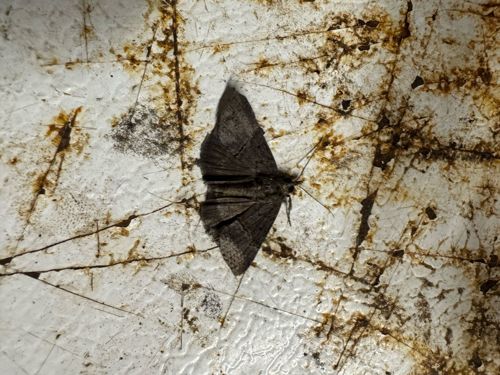Moth (likely a geometrid moth, commonly known as an 'inchworm moth' or 'looper moth')
Scientific Name: Though a precise species cannot be determined from the image, it belongs to the family Geometridae (e.g., "Geometra"). A common genus within this family is "Ennomos" or "Ectropis."
Order & Family: Order: Lepidoptera, Family: Geometridae
Size: Geometrid moths vary in size, but most typically have a wingspan ranging from 15 mm to 50 mm (approximately 0.6 to 2 inches).

Natural Habitat
Moths in the Geometridae family are widespread and can be found in a variety of habitats, including forests, woodlands, grasslands, gardens, and urban areas, wherever their host plants are present.
Diet & Feeding
Adult moths generally drink nectar from flowers or other liquid sources; some species do not feed at all as adults. Larvae (caterpillars) are typically herbivorous, feeding on the leaves, stems, or roots of specific host plants.
Behavior Patterns
Moths are typically nocturnal, attracted to lights at night. They rest during the day, often camouflaged on surfaces like tree bark or, in this case, perhaps a light-colored, textured surface. Their flight patterns can be erratic. Larvae (caterpillars) feed on host plants, and adults primarily focus on reproduction, often having short lifespans.
Risks & Benefits
Generally beneficial as pollinators for many plants. Larvae can sometimes be considered pests if they feed on agricultural crops or ornamental plants, but the majority are not economically significant. They serve as a food source for birds, bats, and other insects.
Identified on: 8/9/2025